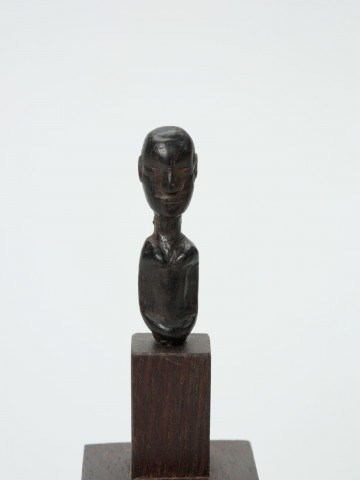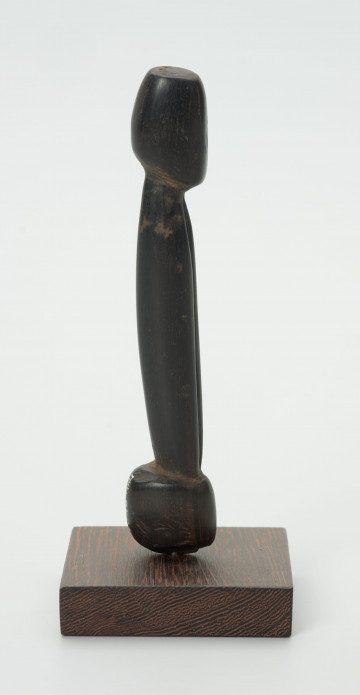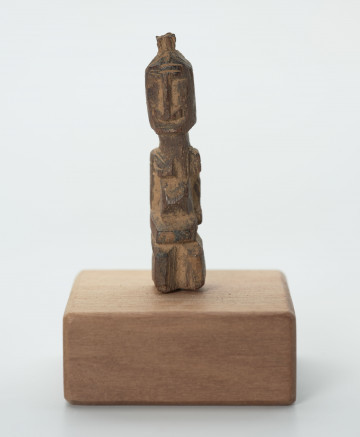
Fetish
między 1951 — 2000
National Museum in Szczecin
Part of the collection: Collection of Dogonian art
The Dogon are apeople living in the Republic of Mali in the Bandiagara, Duentza and Bankass region. Their number is estimated at around 500-600 thousand. The basis of their economy is hoe-farming. Many of the Dogon annual rituals are related to ensuring a good harvest. To this end, they thank the god Amma and their ancestors for a good harvest, while also asking for blessings for the coming field season. The two most important festivals associated with the agricultural calendar are Goru and Bulo, during which the priests of the two cults of life, Hogon (priest of the Lebe cult) and Binukedine (priest of the Binu cult), work together.Goru is a harvest festival, while Bulo is a ceremony associated with preparing the land for sowing. An integral part of both festivals are the numerous offerings made on the altars of Amma and the ancestors. Both festivals have a thanksgiving character and are accompanied by an atmosphere of joy. One of the expressions of the happiness is yuuweey, a kind of blessing, which can be translated as good year or good health. It is also often shouted while drinking konyo beer. Anyway, the consumption of local beer brewed from millet is an integral part of the celebration of many Dogo festivals, including Goru and Bulo. During the Bulo ceremony, a lot of beer is drunk, which is why it is sometimes even called a beer festival. Konyo is prepared by women, and the amount of beer brewed depends on the wealth of the family. The poorer ones, who do not have enough millet to make beer, visit their richer neighbours, who are happy to share the drink. Women also taste konyo during the Bulo festival, although they do not usually drink it. While drinking the beer, the Dogon say a prayer to ensure good fortune for themselves and the community. According to researchers, the main purpose of the holiday is to celebrate solidarity and harmony, which are particularly important values for the Dogon.
Ewa Prądzyńska
Author / creator
Dimensions
cały obiekt: height: 6 cm, width: 1,2 cm
Object type
figure
Creation time / dating
Creation / finding place
Identification number
Location / status

między 1951 — 2000
National Museum in Szczecin

między 1951 — 2000
National Museum in Szczecin

między 1951 — 2000
National Museum in Szczecin
DISCOVER this TOPIC
Museum of King Jan III's Palace at Wilanów
DISCOVER this PATH
Educational path